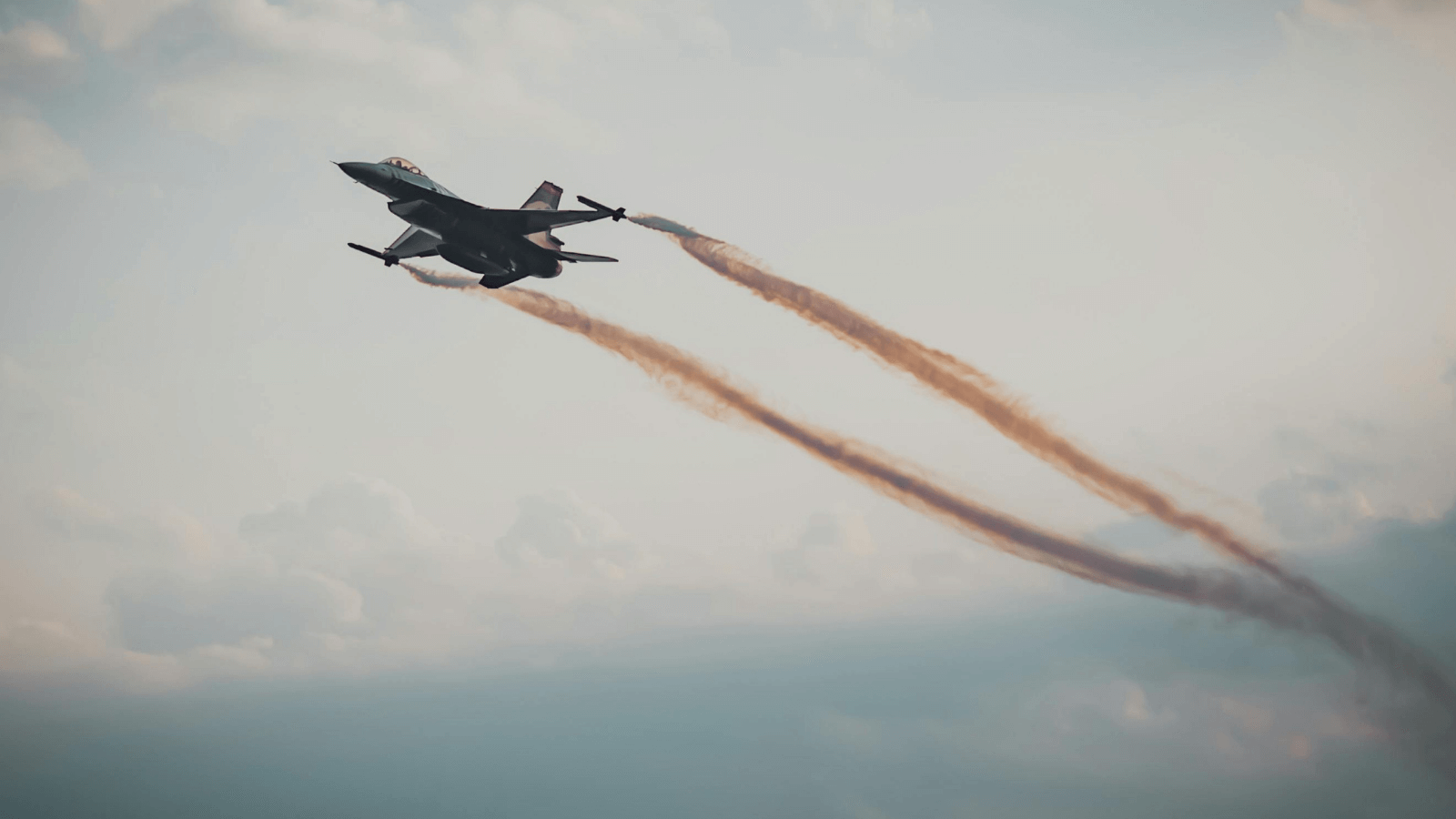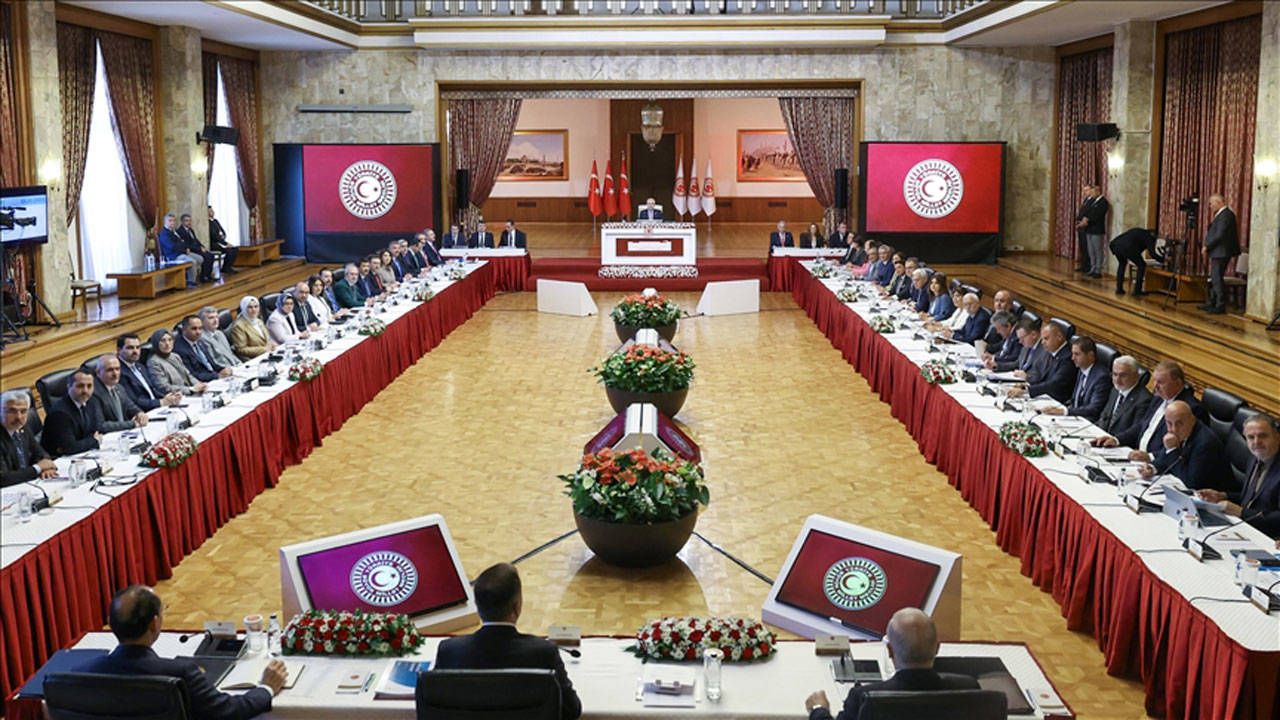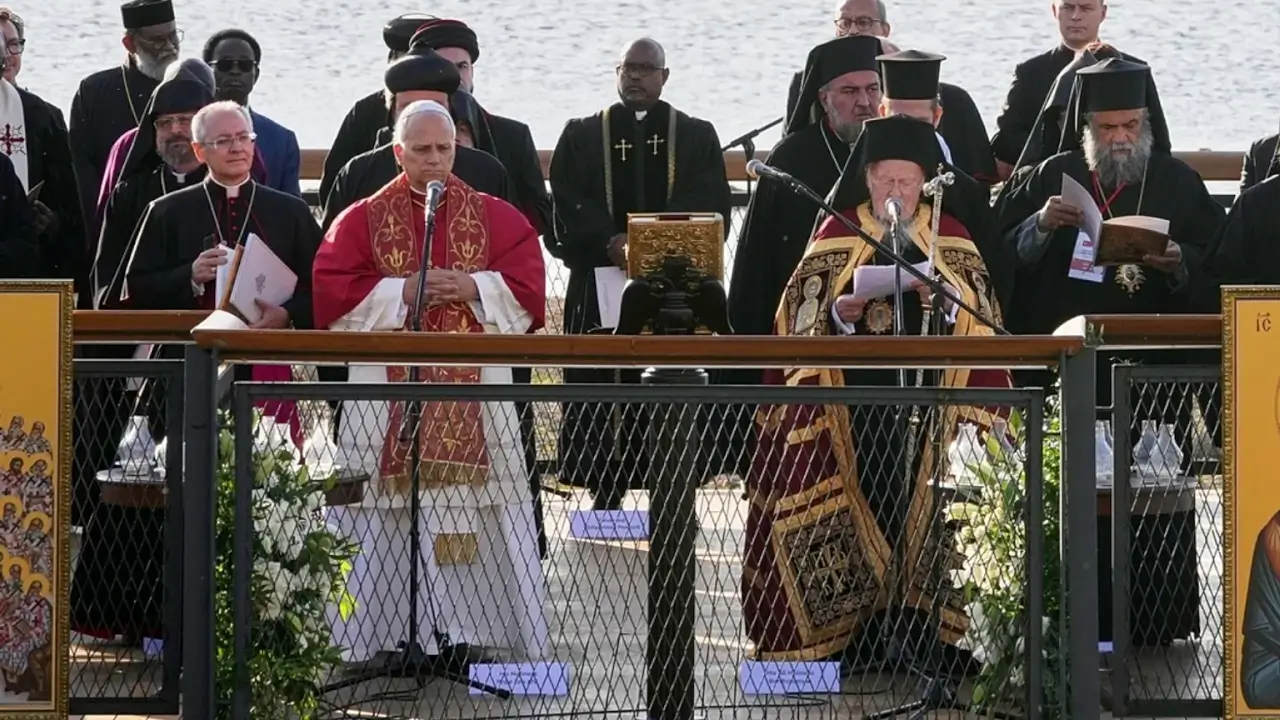The reciprocal air strikes between Iran and Israel in April 2024 marked a critical turning point—not only for regional dynamics but also for global security strategies. In essence, the events starkly revealed the reality that we now live in a new world order. Coordinated attacks involving cruise missiles launched from thousands of kilometres away, hypersonic threats, and swarms of drones have demonstrated that the decisive factor in modern warfare is no longer ground forces, but rather air and missile systems. While victories are not always achieved in the skies, the initial point of conflict has definitively shifted to the air domain. In this context, within a global order where being a smart power has become increasingly important, one could argue that this transformation begins—quite literally—in the air.
In more technical terms, the technological confrontation between Iran’s kamikaze drone swarms and Israel’s multi-layered air defence systems (such as the Iron Dome, David’s Sling, and Arrow-3) has emerged as a striking example shaping the paradigm of 21st-century warfare. This development has not only influenced military strategic circles but has also triggered new and profound debates within the fields of defence industry, intelligence, international relations, and security policy. In this context, hypersonic missile technology has increasingly come to the forefront as a strategic weapon. When equipped with enhanced payload capacities, such missiles pose a serious threat—not merely because of their extreme speed, but also due to their ability to bypass the physical and technological limits of existing air defence systems. While many systems may be capable of detecting hypersonic projectiles, the probability of interception and neutralization remains significantly low. For this reason, hypersonic capabilities are expected to play a decisive role in the architecture of future air power. Moreover, stealth technologies have become critical components of modern aerial platforms. The integration of low radar cross-section features with hypersonic capabilities is fundamentally reshaping the very definition of air superiority. In short, contemporary conflicts around the world have become far more complex compared to earlier eras.
However, this phenomenon is not entirely new to the global landscape. Similarly, the Russia–Ukraine war continues to offer significant insights into the evolving nature of warfare in the emerging world order. In the early stages of the conflict—specifically during the first half of 2022—Russia aimed to rapidly establish air superiority. However, Ukraine’s resilience, bolstered by substantial Western support (particularly through advanced air defence systems such as the Patriot, NASAMS, and IRIS-T), demonstrated that the success of ground operations is now directly dependent on the effectiveness of air defence. Indeed, a considerable portion of the West’s multi-billion-dollar assistance was directed toward strengthening Ukraine’s air defence infrastructure. Ukraine was, at times, even able to respond effectively to Russia’s hypersonic missile threats, thanks to these systems. In short, it has become virtually impossible for a country lacking robust air defence capabilities to endure in a high-intensity conflict for an extended period. This reality reflects a broader transformation within the neo-realist dynamics of contemporary international relations.
Beyond Drones: Reshaping Turkey’s Air Power Strategy for the New Geopolitical Era
These developments carry critical implications for Turkey as well. Geopolitically, Turkey is situated at the centre of several volatile regions, including Syria, Iraq, the Eastern Mediterranean, the Aegean, and the Black Sea. Each of these areas is directly linked to deterrence capacity, which can only be ensured through air superiority. The drone-based success observed during the Nagorno-Karabakh conflict led some decision-makers to mistakenly assume that air power could be fully secured through unmanned systems alone. One of Turkey’s most notable achievements in recent years has indeed been its advancements in unmanned aerial vehicle (UAV) technology. Platforms such as the Bayraktar TB2, Akıncı, and Anka-S have demonstrated operational effectiveness across diverse theatres, including Libya, Syria, and Nagorno-Karabakh. Due to their relatively low cost, extended endurance, and operational flexibility, these systems have proven highly effective in asymmetric warfare. They have provided Turkey with significant tactical advantages in missions involving target acquisition, cross-border operational support, and the neutralization of enemy armoured units. However, is this sufficient? Unfortunately, it is not.
Such systems can prove inadequate against robust air defence networks. Turkey’s air strategy must now be restructured to encompass not only drones but also fifth-generation fighter jets, integrated air defence systems, early warning radar networks, and collective defence infrastructures established with allied and friendly nations. This is crucial not only for military capability but also for political sovereignty, regional influence, and crisis management. Otherwise, the asymmetric advantages gained in the past may leave Turkey vulnerable in future high-intensity conflicts. This issue is significant not only for potential armed confrontations but also in the context of preceding diplomatic relations.
In this regard, Turkey must recognize the realities of the new era and restructure its air force strategy; accordingly, it should invest not only in armed drones but also in fifth-generation fighter jets, integrated air defence architectures, and multilateral deterrence mechanisms. Unless strategic partnerships and long-term technological collaborations that go beyond current objectives are developed, existing advantages may prove misleading and leave Turkey vulnerable in future high-intensity conflicts. Undoubtedly, this does not mean abandoning all other aspects and focusing solely on demilitarization in foreign policy. However, when viewed from the post-Cold War perspective, we must not forget that this dimension has become more important than ever before.
The Status and Needs of the Turkish Air Force
Recent strategic and technological developments have elevated the modernization needs of the Turkish Air Force to a critical level. Turkey’s exclusion from the F-35 program due to the S-400 procurement crisis has disrupted its integration process for fifth-generation fighter jets, leaving the country deprived of advanced air-to-air and air-to-ground capabilities. Meanwhile, the modernization of the existing F-16 fleet has faced significant delays caused by political obstacles in the U.S. Congress. Under the current circumstances, Turkey remains heavily dependent on the fourth-generation F-16 platforms that form the backbone of its air force; however, this alone is insufficient. This situation creates a significant strategic gap, particularly in the capacity to establish air superiority against advanced aerial threats.
Undoubtedly, the KAAN Project represents a critical national platform development initiative aimed at closing Turkey’s strategic air power gap in the long term. Having successfully completed its first test flight in 2024, KAAN aims to achieve full operational capability by the 2030s; however, this timeline remains uncertain. Therefore, it is a strategic imperative within the security dynamics of the new world order for Turkey to develop a multi-layered, flexible, and effective “transition strategy” to maintain air superiority against current and potential threats until KAAN reaches full capacity. In particular, the engine architecture plays a decisive role in KAAN’s stealth capabilities. Turkey is actively working on developing a high-performance indigenous engine that supports stealth flight capabilities and operates on the afterburner principle. Although it is not yet clear whether KAAN will directly incorporate afterburner technology, it is expected to achieve comparable performance levels. In this context, the successful development of domestic engine technology is crucial not only for reducing foreign dependency but also for ensuring the sustainability of national air power.
On the other hand, within the scope of evolving warfare technologies, cruise missiles and laser weapon systems are becoming increasingly significant. Laser weapons stand out as a low-cost yet highly effective solution in defensive operations; their considerably lower operational costs compared to missile systems make them strategically attractive. In this context, ongoing work by ASELSAN in Turkey on laser weapon systems is noteworthy. Although these technologies are not widely publicized, there are credible indications that they are already operationally viable. All these developments clearly demonstrate that Turkey’s approach to building air power must extend beyond aircraft platforms and adopt a comprehensive and integrated defence technology strategy.
From a regional comparative perspective, the Israeli Air Force has established a significant advantage in airspace dominance by integrating F-35I Adir and modernized F-15I platforms with advanced radar, early warning, and electronic warfare systems. Greece, on the other hand, has rapidly transformed its air force into a technologically advanced structure through the acquisition of Rafale jets, F-16V Block upgrades, and its defence cooperation with France. While Iran lags in terms of conventional air force platforms, it has increasingly enhanced its asymmetric air defence capabilities through the development of unmanned aerial vehicles (UAVs) and advanced missile technologies. Undoubtedly, this progress is also supported—albeit with unclear specifics—by backing from Russia and China.
Given this strategic landscape, Turkey must implement an airpower strategy over the next 5 to 10 years that is operationally effective, compatible with NATO standards, and enhances deterrence during this critical transition period. Within this framework, the following components are essential:
- F-16 Modernization Programs (Block 70/72): The operational lifespan and mission versatility of the platform should be extended through upgrades in radar, avionics, weapon integration, and communication systems in full alignment with NATO standards. The integration of AESA (Active Electronically Scanned Array) radar, advanced data links, and modern electronic warfare suites will significantly enhance threat detection and engagement capabilities.
- Airborne Early Warning and Control (AEW&C) Systems: Long-range radar capacities, coupled with advanced command-control and communication infrastructures, should be leveraged to maximize situational awareness within the airspace. This will facilitate synchronized deployment of air assets and improve the effectiveness of both defensive and offensive air operations.
- Integrated Air and Missile defence Systems: By integrating land- and air-based platforms, a multilayered defence shield should be established, particularly against regional aerial threats. In this context, the resilience of the air defence network must be enhanced through a combination of nationally produced and NATO-standard radar systems, surface-to-air missile (SAM) batteries, and electronic warfare technologies.
- Command, Control, Communications, Computers, Intelligence, Surveillance and Reconnaissance (C4ISR) Capabilities: Real-time data sharing and decision-support systems between air, land, and naval forces should be developed to improve battlefield awareness and enable rapid, coordinated responses to emerging threats.
- Interim Airpower Doctrine: Until KAAN reaches full operational capability, a transition period doctrine should be formulated through the integration and effective utilization of the components. This doctrine must prioritize operational flexibility, multi-role mission capability, and advanced electronic warfare proficiency to ensure sustainable regional deterrence and air superiority.
However, these measures alone will not be sufficient; extensive international cooperation will also be required. In the short to medium term, a comprehensive transition strategy built around modernized F-16 platforms and integrated early warning systems—aligned with NATO standards—is of critical importance to enhance the effectiveness of the Turkish Air Force against current and future threats. Such a strategy will not only preserve Turkey’s regional air superiority but also lay the groundwork for the full integration of the National Combat Aircraft, KAAN, in the 2030s. Undoubtedly, while pursuing this approach, high-cost but strategically valuable alternatives—such as the Eurofighter—should also be considered to diversify the air force’s operational inventory. Nevertheless, it must be recognized that Turkey’s decision-making process in this regard involves a complex equation shaped by cost, political preferences, and timing.
Turkey’s Smart Power Game
As the character of military power transforms under the emerging world order, air superiority has become a strategic priority that must be reinterpreted within the framework of international relations theories. From a neo-realist perspective, in an anarchic international system, the primary objective of states is multidimensional security. In this context, air power is not only decisive during armed conflict but also serves as a key pillar of deterrence in pre-crisis periods. However, the classical balance of power approach is no longer sufficient, and a broader strategic lens is required.
It must be clearly stated that Turkey’s geopolitical location exposes it not only to surrounding threats but also to significant strategic opportunities. Therefore, Turkey’s air power strategy should be designed through a “smart power” approach that integrates multiple dimensions, including technological modernization, domestic production capacity, multilateral defence cooperation, and diplomatic flexibility. What matters is not merely increasing military force but employing that force as a legitimate and effective instrument within the international system. For long-term success, Turkey must act with a strategic mindset that prioritizes sustainable and collective security, rather than relying on temporary solutions. Otherwise, structural deficiencies in defence could become Turkey’s Achilles’ heel in its foreign policy.








